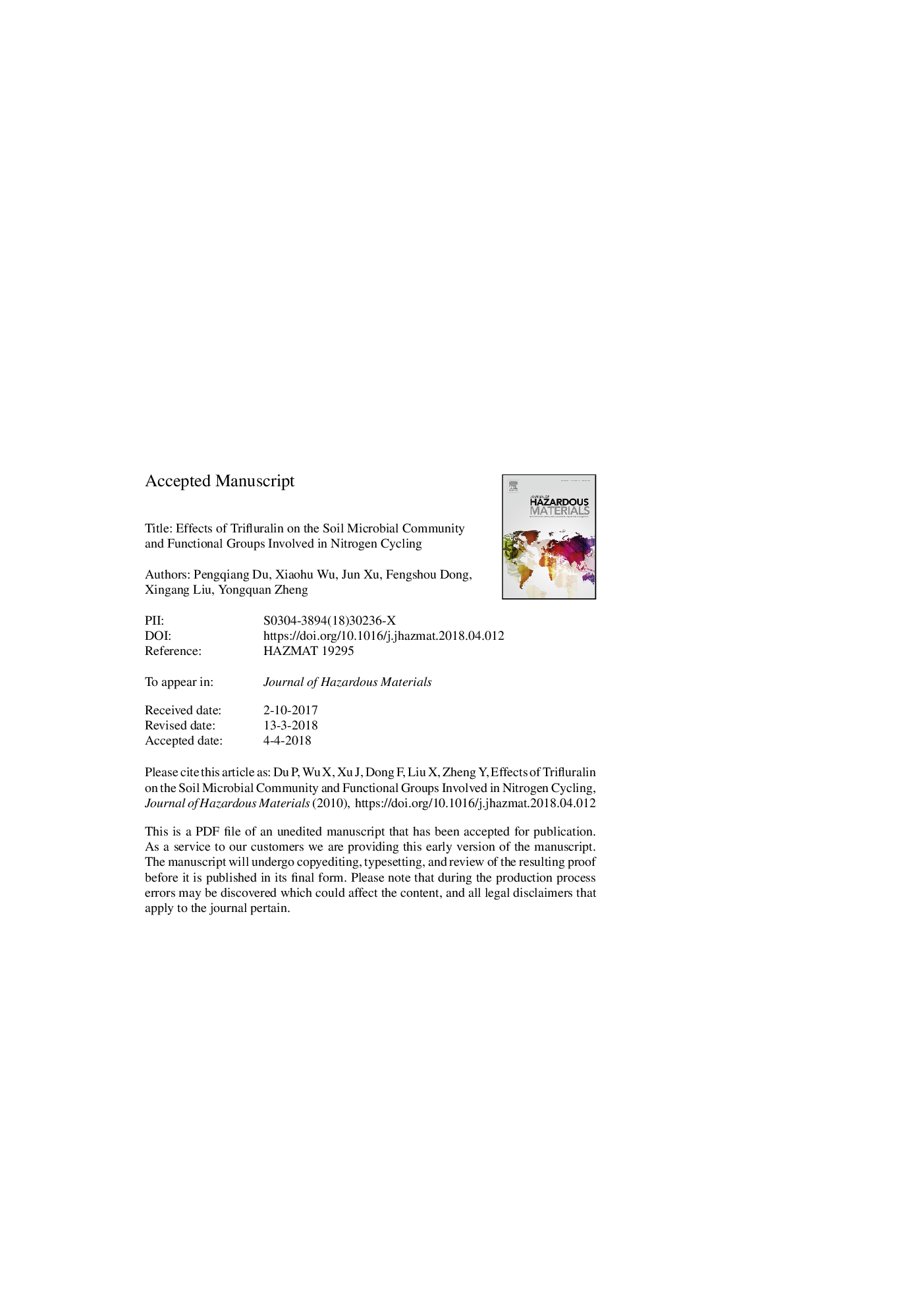| Article ID | Journal | Published Year | Pages | File Type |
|---|---|---|---|---|
| 6968484 | Journal of Hazardous Materials | 2018 | 34 Pages |
Abstract
Large amounts of triï¬uralin are applied each year for weed control; however, its effects on soil microbial communities and functions are unknown. Two agricultural soils, one silty loam and one silty clay were spiked with TFL (0, 0.84, 8.4, and 84â¯mgâ¯kg-1) and studied the effects using a laboratory microcosm approach. The half-lives were 44.19-61.83 d in all cases. Bacterial abundance increased 1.12-5.56 times by TFL, but the diversity decreased. From the next-generation sequencing results, TFL altered the bacterial community structure, which initially diverged from the control community structure, then recovered, and then diverged again. Linear discriminant analysis effect size indicated that Sphingomonas and Xanthomonadaceae were the predominant species on day 7 and 15 in TFL treatments. N2-fixing bacteria were initially increased, then decreased, and then recovered, and it was positively correlated with NH4+-N content. Compared with the control, ammonia-oxidizing bacteria were decreased by 25.51-92.63%, ammonia-oxidizing archaea were decreased by 17.12-85.21% (except day 7), and the NO3â-N concentration was also inhibited. In contrast to bacteria, fungal abundance was inhibited without any observable effects on fungal diversity or community structure. These results suggest that TFL impacts soil bacterial community and alters functional microorganisms involved in soil N processing.
Related Topics
Physical Sciences and Engineering
Chemical Engineering
Chemical Health and Safety
Authors
Pengqiang Du, Xiaohu Wu, Jun Xu, Fengshou Dong, Xingang Liu, Yongquan Zheng,
